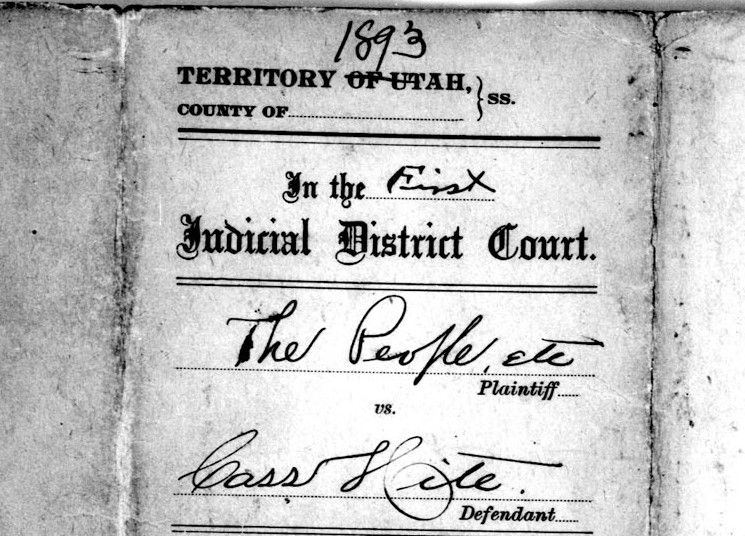
New Discoveries in the Archives: A Question of Self-Defense
This blog post was written by McKenzie Wood, a 2022 AS-L Outreach Intern at the Utah State Archives and Records Service. She is in her master’s program for Library and Information Science at St. John’s University in Queens, New York and is particularly interested in criminal justice.
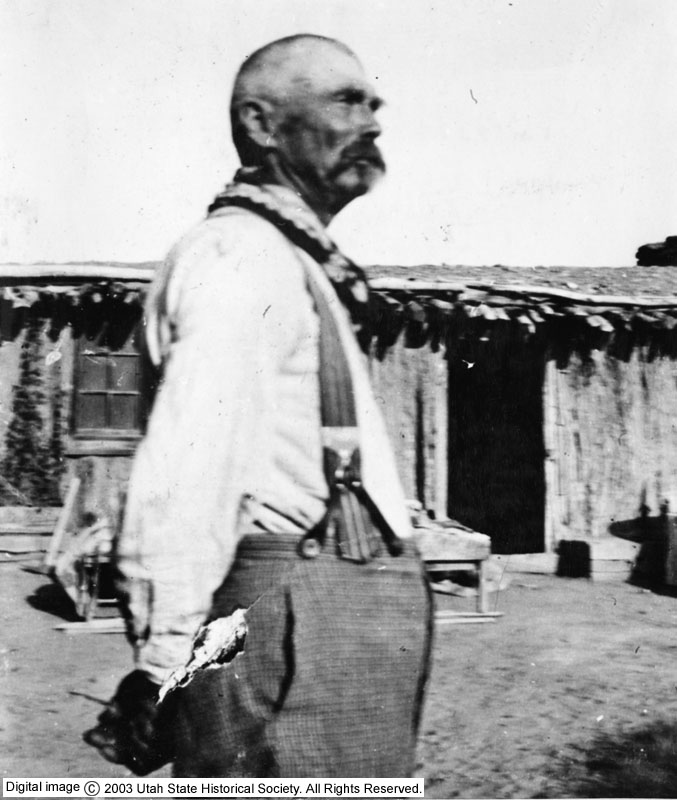
On September 9, 1891, Adolf F. Kohler was shot and killed by local prospector Cass Hite in the Green Valley region of the Utah Territory, where Emery County, Utah is now located. The following year, Hite was convicted of second-degree murder and sentenced to 12 years in the Utah Territory Penitentiary under hard labor conditions. This seems like an open-and-shut case on the surface. However, upon digging into the 111-page pardon application for Cass Hite digitized by the Utah State Archives – filled with pleas for pardon both from Hite and citizens of the Utah Territory on his behalf – complexities emerge. The case becomes less about pardoning a supposedly innocent man of murder, and more about upholding the constitutional right to self-defense.
Hite’s long application details what led up to the shooting: he and Kohler had bad blood over business deals gone wrong. When Hite got back into the territory from a prospecting trip, Kohler’s frustrations boiled over into threats that he would carry a gun around town ready for Hite.1 Hite went over to Kohler’s cabin to speak with him. A shootout occurred, leaving Kohler dead and Kohler’s friend, Drake, wounded.
During the first trial held in February 1892, Kohler’s friends told the court that Hite was the aggressor leading to the shooting. Kohler seemed frightened of Hite and had his gun at the ready for his own defense. Still, his friends said Kohler only wanted to talk with Hite. During their conversation, Hite became offended at Kohler calling him a coward and shot him out of anger.2
Hite’s defense had a different story. According to Hite, he heard about Kohler’s anger and threats toward him when he returned to Green Valley on September 8, 1891. The next morning, Hite set out to Kohler’s not to shoot him, but to settle their differences in a peaceful manner.3 Despite these efforts, Kohler shot at Hite first. Bullets whizzed over Hite’s head, and Hite pulled his own revolver and shot Kohler twice and Drake once in the arm accidentally. Both shots hit Kohler in the chest, who retreated into a back room of his cabin and died minutes later.4 Hite fled the scene, but later turned himself over to law enforcement when he learned of Kohler’s death.
The court was split on which side to believe. With no solid proof of either side’s story other than bullet holes and a dead man, a “he said, she said” predicament ensued. Witnesses leaned one way or the other and often contradicted key points of the case depending on which side they supported. According to James H. Knipmeyer, author of Cass Hite: The Life of an Old Prospector, it “ultimately came down to which witnesses each member of the jury believed.”5 Due to the split, the judge called a mistrial, and another trial was held later that year.
The second trial went differently. Rather than being split, the jury came back with a unanimous guilty verdict and sentenced Hite to 12 years in the Utah Territory Penitentiary in October 1892.6 Hite and friends were in disbelief. How could the jury find Hite guilty when he had been shot at first? The Second Amendment to the Constitution of the United States allows U.S. citizens the right to bear arms in defense of their person and property, yet here was a trial where the defendant was being punished for exercising this right.7 Hite suspected his sentencing was due to all 12 jurors being members of the Church of Jesus Christ of Latter-day Saints or Mormons. Hite was a vocal opponent against the religion, often calling it and its people a “cancer” to the land and wanting to drive them from the territory. He believed that due to his views, the jury of Mormons had it out for him.8 A biased jury sent him to prison.
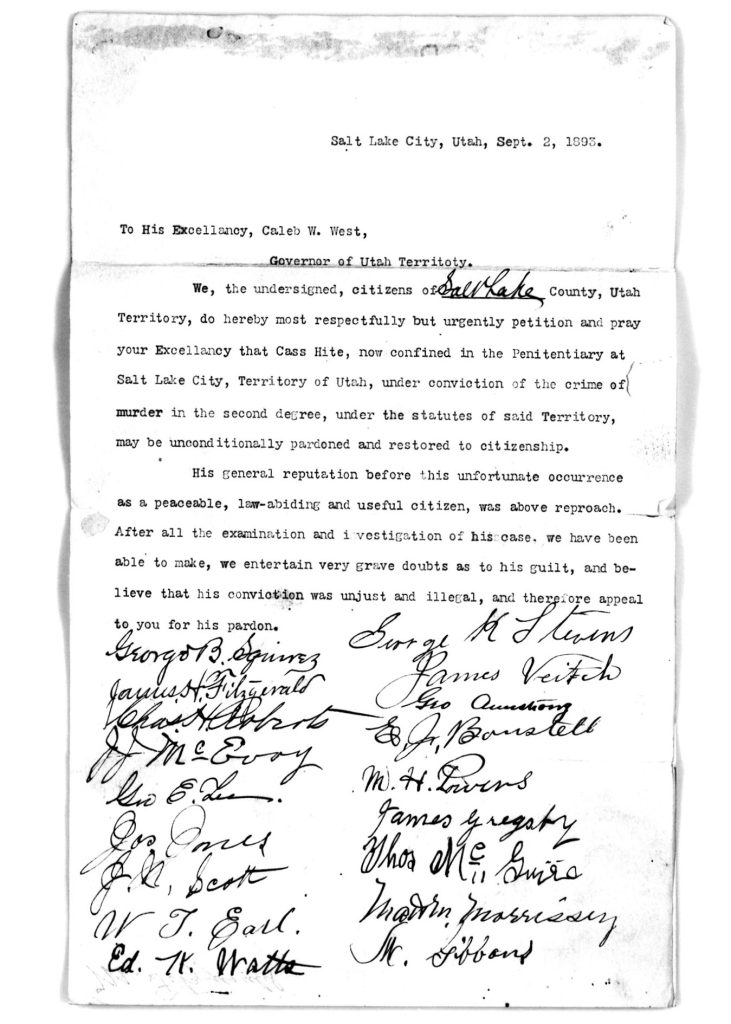
When people of the territory heard about his sentencing, there was a large outcry. “[Hite’s] general reputation…as a peaceable, law-abiding and useful citizen, [is] above reproach,” says one letter sent to Governor Caleb West, pleading on Hite’s behalf for a pardon. It was then signed by 18 men testifying to this.9 Another letter states that the trial was “unfair and…unjust and that the law was violated” by ignoring the facts of the case.10 A typed plea from Hite’s attorneys affirms the trial that sent Hite to prison “created prejudice and a bias in the minds of the Jury against [Hite]” by bringing up assertions that Hite was a gambler, a counterfeiter, and guilty of other crimes with no evidence to support the claims.11 People knew Hite defended himself against a willing killer and were angry his right to bear arms was violated. If they did not stand up for this innocent man, there was no telling what would happen if they faced a similar situation.


By the end, most people involved – including 8 of the 12 original Mormon jurors that sentenced Hite – believed him to be innocent and justified in the killing of Adolf Kohler out of self-defense. Hite and friends were surprised by the Mormon jurors’ turnaround, having believed the entire time that they had wanted Hite locked up for good. The immediate and overwhelming reaction from general territory citizens as well caused Governor Caleb West to seriously reconsider the sentencing Hite was given. On November 29, 1893, the constitutional right to defend one’s life was upheld; Cass Hite was pardoned of all charges of murder and made a free man once again.12
When I started this project, I clicked through hundreds of pardon letters in the Utah State Digital Archives. Finding Cass Hite was a treat. I was immediately interested by how many people stated he was not guilty, their letters making up most of his pardon plea. Digging into his and Utah’s legal past was exciting. I would not have found such an interesting story had I looked for it. Want to experience your own piece of state history? Start exploring now!
Sources Used:
1. The People of the Territory of Utah vs. Cass Hite, Utah Territory (1892), Series 328, Board of Pardons Prisoner Application Pardon Application Files, 1892-1949, Utah State Archives, https://images.archives.utah.gov/digital/collection/328/id/65570/rec/1.
2. The People of the Territory of Utah vs. Cass Hite, https://images.archives.utah.gov/digital/collection/328/id/65571/rec/1.
3. “Cass Hite in His Own Behalf,” Salt Lake Tribune, October 10, 1892, from Utah Digital Newspapers, https://newspapers.lib.utah.edu/ark:/87278/s6ht402v/12934014, (accessed March 18, 2022).
4. The People of the Territory of Utah vs. Cass Hite, https://images.archives.utah.gov/digital/collection/328/id/65571/rec/1.
5. John H. Knipmeyer, Cass Hite: The Life of an Old Prospector, (Salt Lake City, Utah: The University of Utah Press, 2016), 147-8.
6. “The Cass Hite Case Decided,” Vernal Express, October 20, 1892, from Utah Digital Newspapers, https://newspapers.lib.utah.edu/ark:/87278/s6vh7272/21229635, (accessed March 18, 2022).
7. U.S. Constitution Amendment II.
8. Knipmeyer, Cass Hite: The Life of an Old Prospector, 155.
9. Citizens of the Utah Territory to Governor Caleb W. West, 2 September 1893, Series 328, Board of Pardons Prisoner Application Pardon Application Files, 1892-1949, Utah State Archives, https://images.archives.utah.gov/digital/collection/328/id/65646/rec/1.
10. T.J. Anderson to Governor Caleb W. West, 20 September 1893, Series 328, Board of Pardons Prisoner Application Pardon Application Files, 1892-1949, Utah State Archives, https://images.archives.utah.gov/digital/collection/328/id/65648/rec/1.
11. The People of the Territory of Utah vs. Cass Hite, Territory of Utah District Court First Judicial District, Series 328, Board of Pardons Prisoner Application Pardon Application Files, 1892-1949, Utah State Archives, https://images.archives.utah.gov/digital/collection/328/id/65634/rec/1.
12. There are conflicting dates of when Cass Hite was pardoned and released. This blog uses the date found in Cass Hite: The Life of an Old Prospector. Knipmeyer, Cass Hite: The Life of an Old Prospector, 163-4; “Cass Hite Receives Pardon,” Vernal Express, December 7, 1893, from Utah Digital Newspapers, https://newspapers.lib.utah.edu/ark:/87278/s6v427jg/21225622, (accessed March 18, 2022).
Recent Posts
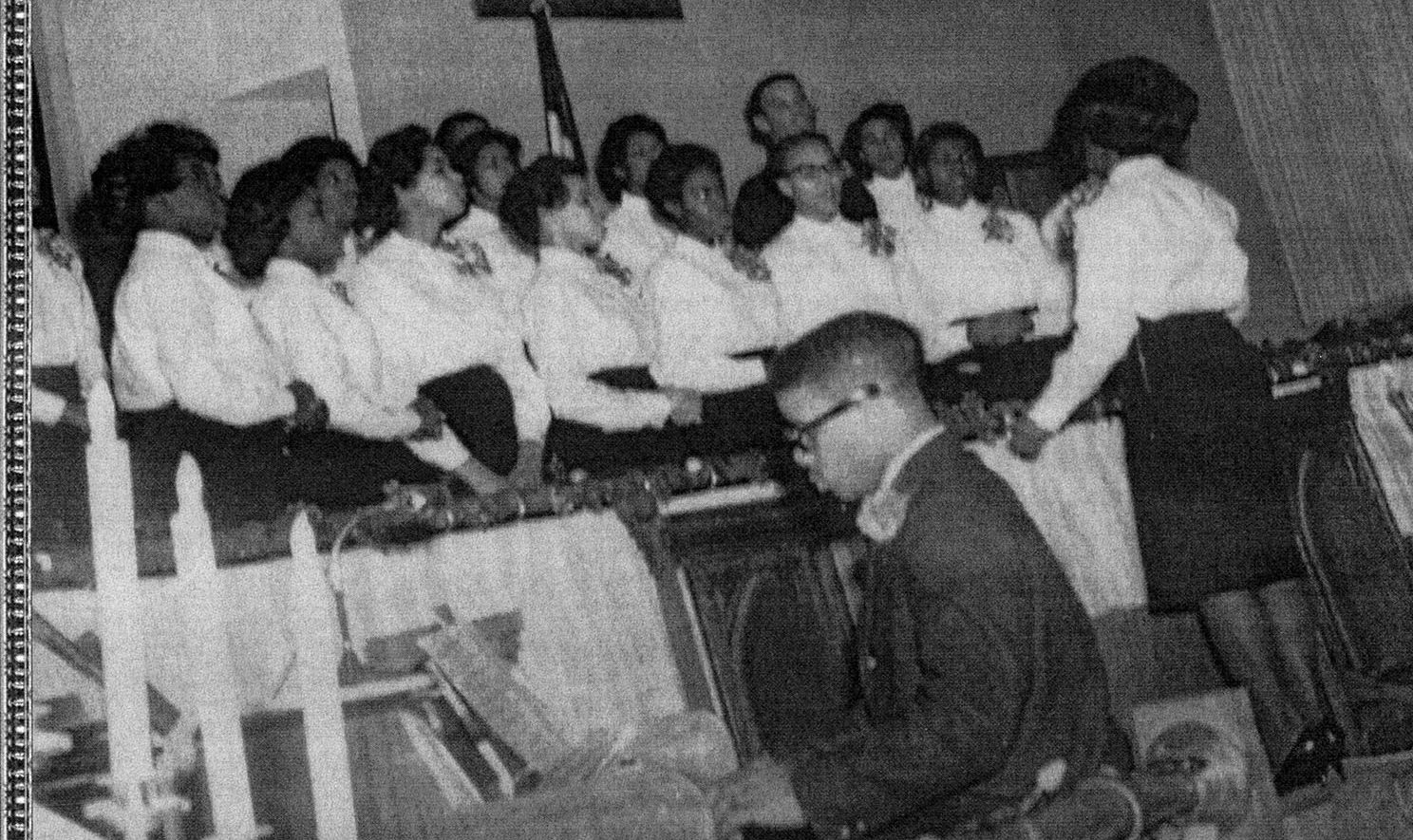
From Pews to Pixels: Weber State’s Stewart Library Digitizes New Zion Baptist Church’s Legacy
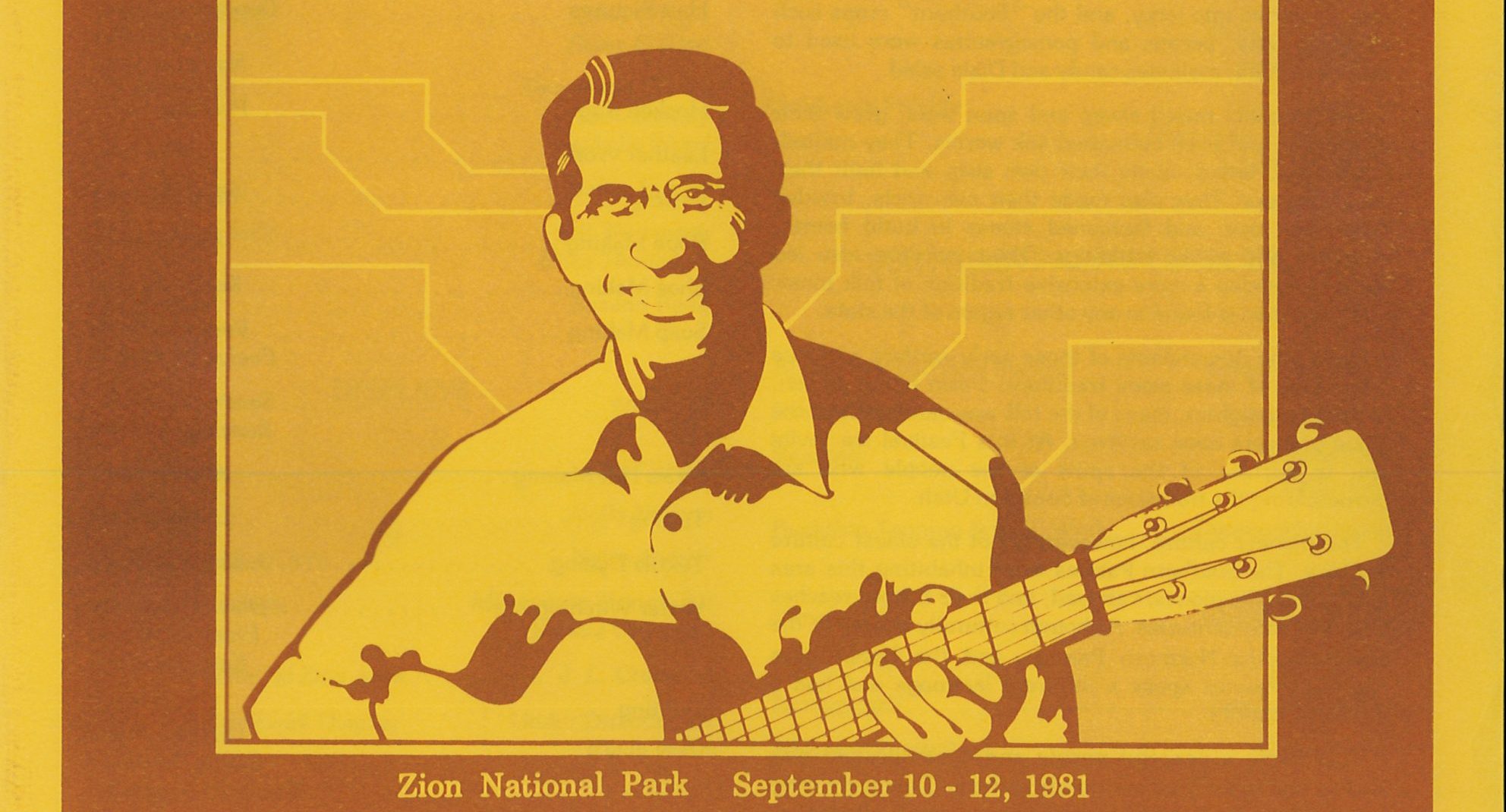
New Finding Aids at the Archives: March 2024
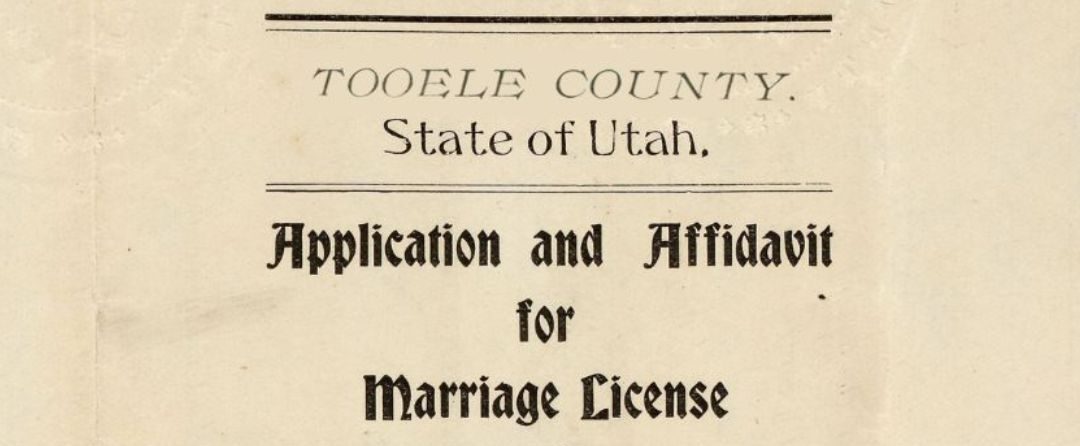
Sealing the Deal: Tooele County Clerk’s Office Unlocks the Vault with Historic Marriage Records
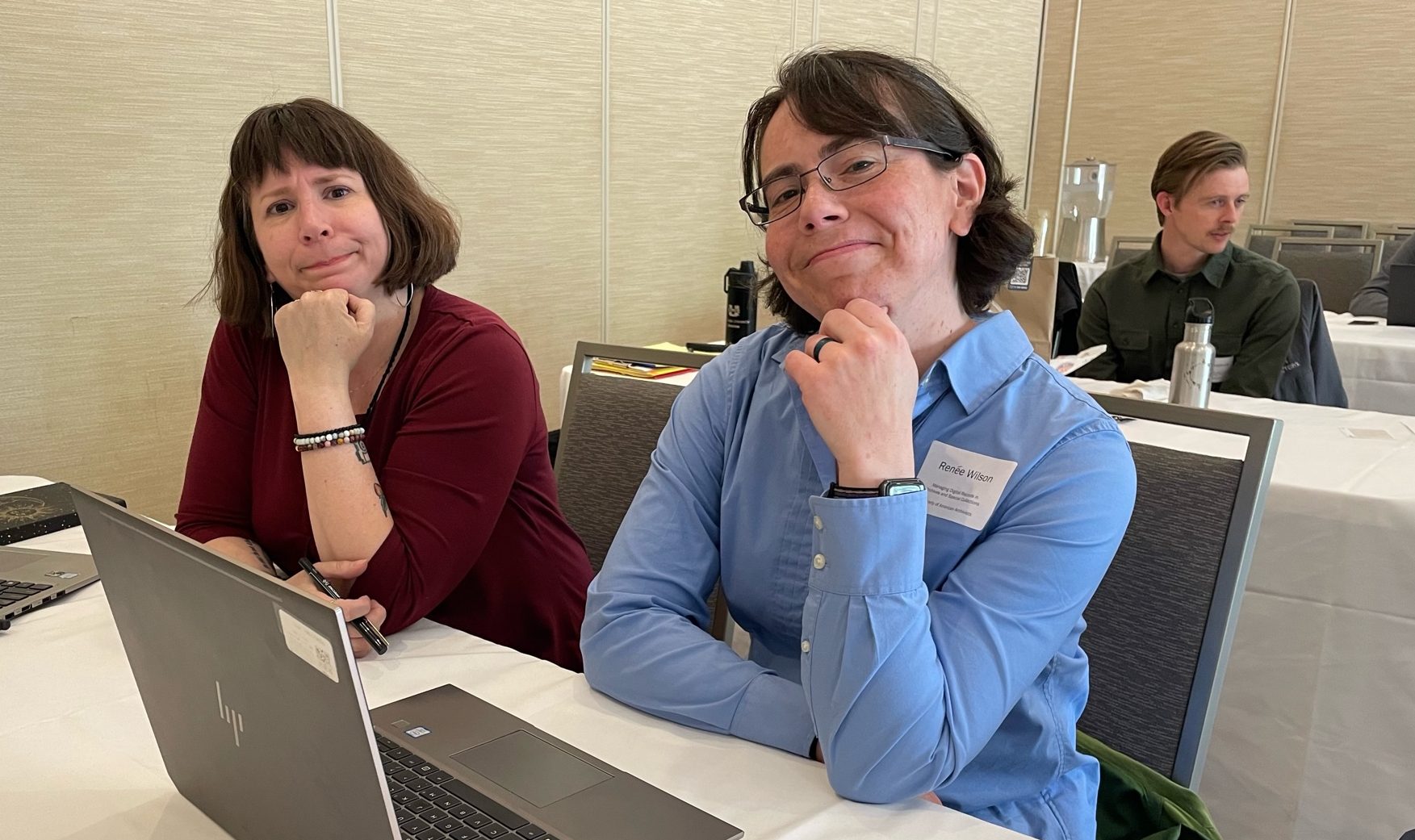
Summer 2024 Internships
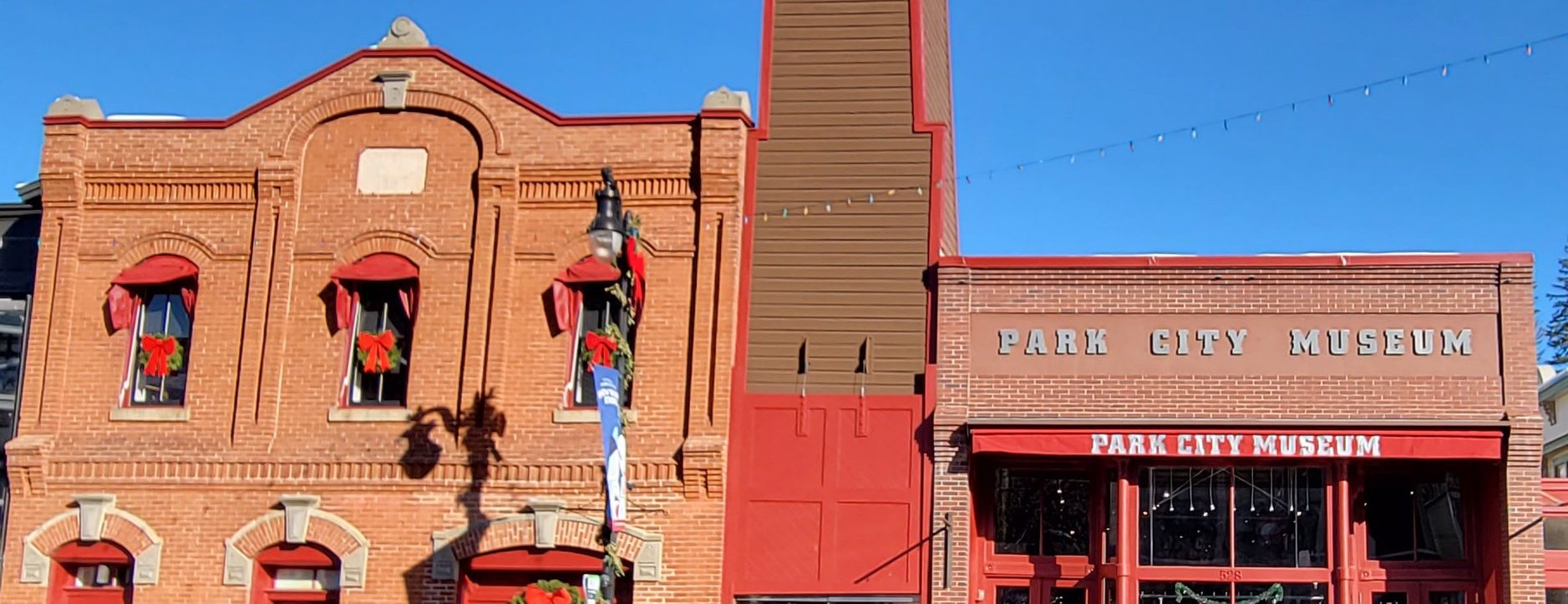
Developing History: Park City Museum’s Snapshot into the Past
Authors
Categories
- Digital Archives/
- Electronic Records/
- Finding Aids/
- General Retention Schedules/
- GRAMA/
- Guidelines/
- History/
- Legislative Updates/
- News and Events/
- Open Government/
- Records Access/
- Records Management/
- Records Officer Spotlights/
- Research/
- Research Guides/
- State Records Committee/
- Training/
- Uncategorized/
- Utah State Historical Records Advisory Board/